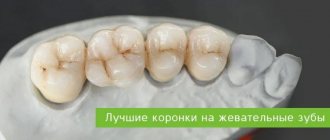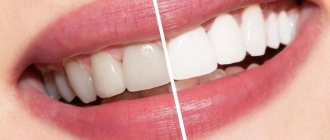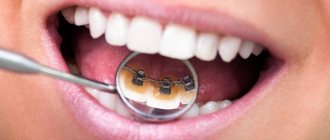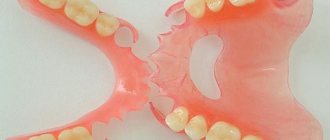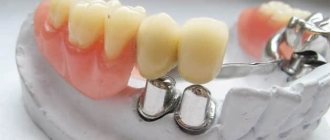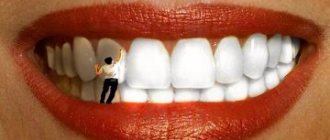Poor oral hygiene and advanced caries lead to undesirable consequences - inflammatory processes with complications, the development of various diseases such as periodontitis. Currently, dentists use dental splinting to treat it.
This is a technology that is efficient and reliable. Until recently, a bulky metal prosthesis was used to solve the problem, which caused a lot of trouble for the patient. Now the treatment is carried out using materials that are light, durable and harmless to human health, and the functionality of the teeth is successfully restored while maintaining their external attractiveness.
What is the essence of the problem?
Severe caries, when not only dentin is affected, but also the pulp, provokes the development of inflammatory processes. Complications begin, manifesting themselves in the form of pulpitis and periodontitis. In the latter case, the teeth acquire unwanted mobility, which is caused by bone tissue atrophy.
A visual indicator of the destructive process is the exposed necks of the teeth. The danger is that a decrease in bone tissue leads to loosening of the teeth, and their mobility greatly accelerates the process of atrophy. If you do not seek help from doctors, the situation will get out of control, the symptoms of inflammation will become stronger each time, and the infection will spread to neighboring, healthy teeth.
Since, when chewing, the teeth experience pressure of a certain force, after a while they begin to change their location, moving in different directions. Splinting teeth for periodontal diseases is designed to prevent this process and preserve their functionality and aesthetics.
The technique involves binding moving teeth into a single whole using special materials. At the same time, they gain stability, immobility, and the chewing load is evenly distributed across the entire horizontal plane. There are temporary and permanent splinting.
Temporary is justified when the disease is just beginning, and destructive processes do not have pronounced symptoms - after a jaw injury, with a slight displacement of the teeth, at the initial stage of damage to the gum tissue. If there is a real threat of tooth loss, dentists recommend the use of permanent splinting.
Most patients have a negative attitude towards permanent structures due to their external unattractiveness, because for people engaged in public activities, the aesthetic component plays an important role. In addition, the duration of the procedure, mandatory preparation and the high cost of the service are deterrents.
The main causes of loose teeth
Loose teeth in any case is a serious symptom that indicates the development of a pathological process in the body. Experts have identified several main reasons affecting tooth loosening:
- periodontitis;
- periodontal disease;
- gingivitis;
- congenital gum pathologies;
- jaw injuries;
- unbalanced diet;
- tumor formations in the jaw and gums.
The most common cause of this condition is periodontitis, which is inflammation of the periodontal tissue. In this case, the root is exposed and the teeth begin to loosen. Periodontal disease can also often cause loosening; its result is a lack of strength between the tooth and the surrounding tissues. In any case, when one of these diseases is diagnosed, careful and long-term treatment is necessary to help fix the teeth.
On a note! Sometimes a similar condition can be caused by the absence of neighboring teeth when dental implantation and prosthetics were not carried out in time. In this situation, doctors also prescribe splinting and restoration of the lost unit.
Materials used
Until recently, the vast majority of clinics used silk and polyethylene to solve the problem. Nowadays, higher quality materials are popular - fiberglass (aesthetics and reliability) and aramid thread (strength exceeds similar indicators of other materials by 8 times).
All materials used must meet certain requirements:
- have the ability to firmly hold loose teeth and securely attach to them,
- do not cause traumatic effects on enamel and gums,
- do not cause the patient discomfort when chewing,
- do not break diction,
- have an aesthetically attractive appearance,
- do not complicate oral care.
Complications
With improper care or during the installation process, you can encounter a number of complications:
- recurrence of periodontal disease or other disease;
- severe loosening of teeth;
- removal of teeth during the process of taking an impression;
- painful sensations during the installation of the splint;
- loss of cement or tires.
As a rule, the consequences arise due to the wrong choice of construction material or during its manufacturing process.
They can be resumed after treatment of periodontal disease or other interventions. Next, splinting is carried out carefully so that horizontal loads do not occur due to incorrect manufacturing of the tire.
Poor processing of the frontal dentition or incorrect stamping of crowns can also be considered a gross mistake. For this reason, the bite may change and tooth loosening may increase. If you make an incorrect relationship between the tubercles and make them slide poorly, this can provoke an exacerbation.
The price category in different dental clinics varies significantly and depends on a number of factors:
- the dental instruments and materials used (brand of fiberglass tape for splinting teeth, which companies supply the material);
- complexity of the problem and the amount of time spent by the doctor.
If several teeth are loose at the same time, then it is futile to assume that it will be quick and cheap.
What's included in the full price:
- primary dental examination of the oral cavity;
- diagnostics (x-ray);
- receiving a prosthesis;
- elimination of diseased and carious teeth;
- dental impression;
Preliminarily, the price is calculated as follows:
- procedure for 6 front teeth using fiberglass tape - about 7,000 rub.
- installation of 3 lateral teeth – 5000 RUR.
- procedure using crowns – 4000 rub.
- the price of a clasp prosthesis is 24,000 rubles.
Application of fiberglass
Splinting teeth for periodontal diseases is most often carried out using fiberglass tape. A horizontal groove is made, which, after installing the tape, is carefully covered with a special composite material. Both mobile and healthy teeth are fastened into a single whole to ensure reliable fixation of the structure.
When treating lower teeth with fiberglass, fangs must be included in the general beam, which gives the structure solidity and strength. In addition, they take on the bulk of the chewing load, relieving mobile teeth from excessive pressure.
Splinting of the front teeth is carried out in a similar way, only the dentist drills a groove on the front surface of the upper jaw. The main advantage of fiberglass is its invisibility; this factor is important for people engaged in public activities. Eliminates interdental spaces; if necessary, you can remove it and fill the groove.
More advantages:
- the use of fiberglass increases the chance of preserving mobile teeth, and the atrophy process slows down or stops,
- the procedure does not involve grinding healthy teeth or removing pulp,
With cable-stayed splinting, the preparation, the installation process itself, and the resulting result are similar, the only difference is that instead of fiberglass tape, high-strength aramid thread is used.
How is the procedure performed?
Fixation is carried out in several stages, technical features depend on the chosen method. The standard procedure for splinting with fiberglass thread consists of several stages.
- Complete sanitation of the oral cavity is required, including treatment of caries, professional hygiene, and removal of teeth that cannot be restored.
- The procedure itself begins with local anesthesia, as well as isolation of the dentition.
- Using a special tool, the doctor cuts out indentations: on the upper jaw from the outside, on the lower arch from the inside.
- Next, fiberglass tape or reinforcing threads are laid, which are secured with heliocomposite material.
Removable prosthetics
This method is used in cases where one or more teeth are missing. Since the denture is made from a template that recreates the features of the patient's jaw, it not only closes the voids, but also firmly holds the remaining ones, preventing their mobility.
Most often, plastic is used, which is much cheaper than other types or metal products. The final choice of one design or another depends on the clinical situation, individual characteristics characteristic of the patient, solvency and other factors.
Splinting teeth for periodontal diseases is a common dental service that the average citizen can afford. The price of the procedure depends on the quality of the material used, the degree of complexity of the work, the method of prosthetics and other factors.
Indications and contraindications for installing tires
Indications for installation of fixing structures are:
- periodontal tissue diseases;
- injuries and pathologies of bone tissue;
- high degree of root exposure;
- deep periodontal pockets;
- dental defects.
Among the contraindications to the installation of splints are: hyperesthesia (high sensitivity of the enamel), infectious and inflammatory processes in the oral cavity, carious lesions, and the patient’s tendency to be allergic to the materials used.
Splinting with fiberglass tape
Splinting with tape gives a temporary effect - even if the procedure is carried out in compliance with the standards, and the patient adheres to the doctor’s recommendations, the service life of such structures does not exceed three years. If there are splints on the front teeth, but there are no molars, then there is a high probability of the splint breaking after a short time due to excessive overload. Therefore, it is advisable to restore the missing row so that the pressure becomes uniform.
Crowns last longer, but if periodontitis is in the initial phase, it is better to abandon this method, since it involves grinding down healthy teeth under the structure.
Clasp dentures have many advantages, especially if it is necessary to restore a large number of teeth and eliminate their mobility.
Precautionary measures
- Interlig fiber components may cause allergies. Avoid direct contact with the skin of your hands before polymerization. Use gloves, mask and safety glasses. In case of accidental contact, immediately rinse the affected area with water. If irritation in the affected area persists, consult a doctor.
- Store in a cool, dry place, protected from light and excessive heat (ovens, stoves). Do not store near products containing eugenol. Should be stored at temperatures up to 28″ C.
- After use, store remaining tape in its packaging to avoid excessive exposure to light.
System properties and advantages
The ceramic material is very thin and fully compatible with other biological tissues. Due to the hydrophobicity of the system, the destruction of restoration areas by moisture is prevented.
The strength of the glass does not allow small dangerous fragments to fall off. Glas Span is completely safe and environmentally friendly. Does not wear out and is not subject to temperature influences. Does not unravel when cutting and does not unravel when modeling (unless necessary).
GlassSpan splinting tape has a number of advantages over other similar systems:
- does not require specialized equipment for operation;
- does not lengthen or shrink;
- maintains durability and constant physical properties even at high temperatures;
- absorption of a small amount of moisture, due to which it does not enter the prosthesis;
- the material is colorless and invisible in the mouth;
- durability, resistance and elasticity;
- high micromechanical retention;
- ensuring aesthetics;
- the work does not require special scissors, gloves or other tools;
- retains ductility, lasts a long time and wears out slowly.
Release form
Packaging: glass capsule.
The set includes:
- ceramic tape (GlasSpan Tape) - length 27cm (3 by 9cm), width 2.00mm;
- small cord (Rope Small) - length 27cm (3 by 9cm), width 1.00mm;
- medium cord (Rope Medium) - length 27cm (3 by 9cm), width 1.50mm;
- large cord (Rope Large) - length 27cm (3 by 9cm), width 2.00mm.
One set contains 4 glass capsules.
Technical qualities
Dentists who use GlassSpan in their practice claim that this system is easier to work with than other analog ones, since the product does not become contaminated.
Many of these materials require pre-treatment or impregnation with special resins and compounds before starting work; they cannot be touched by gloves without introducing dirt. This circumstance complicates the process of restoring the tooth and attempting to fix the splint in the mouth.
The splinting tape of the system is thin and quite flexible , while other reinforcing materials are much thicker. It can be cut with any scissors, which cannot be done with material from other manufacturers. They can only be cut with special scissors.
The tape contains ceramic fibers, but not plastic . Ceramics are more stable in parameters, do not absorb moisture, and do not require additional processing than plastic. The transparency of ceramic fibers is more aesthetically pleasing and does not wear out.
If, when polishing or adjusting a restoration, plastic fibers are accidentally exposed to temperature, the process of fusion will begin. The material will quickly become contaminated and the doctor will have to redo the work.
This does not happen with the material of the GlassSpan system - you can easily polish it, because... there is no reaction to temperature changes.
The cord is also different. This is the only type of fiber that has a round braided shape - twisted into a hollow rope. It is more practical and convenient for performing splinting, artificial extension of columns and strengthening of prostheses. Typically, ropes are inflated with a flowable composite or layer-by-layer material.
The GlassSpan system also stands out for its patented surface treatment method - it has ceramic etched fiber, which guarantees complete final adhesion to the composite.
Some other types of fibers must first be coated with resin without undergoing a proprietary treatment, which reduces bond strength.

